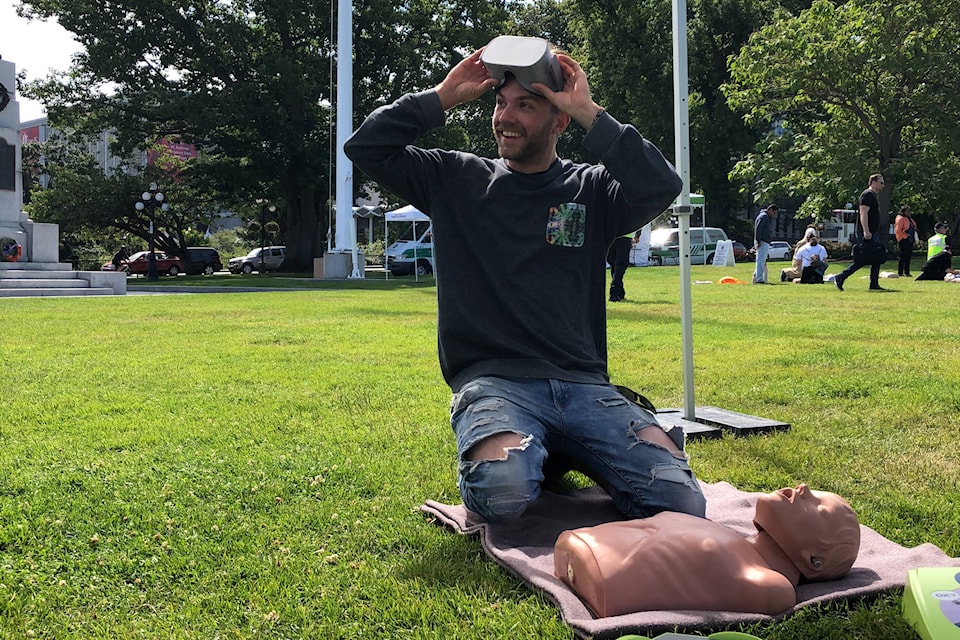CPR-training mannequins sat scattered on the front lawns of the B.C. Parliament Buildings on Saturday.
St. John Ambulance’s British Columbia and Yukon division, alongside AED-manufacturer Zoll, hosted virtual reality CPR and AED — automated external defibrillator — training. The training was open to anyone.
“A majority of the people who’ve had [CPR and AED] training may not come across sudden cardiac arrest, so the virtual reality gives you a life-like scenario,” said Drew Binette, St. John’s director of strategic partnership and fund development.
The organization is considering bringing virtual reality into its classrooms.
“We’re trying it out to see if this is something we’re going to add to the classroom in the future,” Binette said.
Derek Sloos, who was visiting Victoria, was the first to try the training Saturday.
“I was nervous, and it was just virtual reality,” the 28-year-old, who’s yet to receive formal CPR and AED training, said. “I can’t imagine a real situation.”
Read also: Saanich lifeguards earn Vital Link awards for cardiac arrest response
He didn’t realize how hard he needs to push during chest compressions.
“It was intimidating constantly having to push harder because you feel like you’re going to hurt the individual,” Sloos said.
Binette compared the virtual reality training to a game.
“We’ve kind of made it fun,” he said.
The exercise, which plays out of an app from Zoll, can be used by anyone with virtual reality goggles, including the cardboard models, Binette said. The app will provide the trainee with a percentage score after the virtual reality exercise.
The score measures whether or not the trainee is performing compressions at the right speed and with the right depth.
Sloos scored a 38 per cent, which sits roughly in the middle of scores Binette has seen for first time users with no CPR or AED training.
“I’ve seen anywhere from 10 per cent to 50 per cent, so we have a lot of training to do,” Binette said.
Don’t expect to score 100 per cent with limited practice, of course. Binette, who was a paramedic for 12 years, said he scored an 88 per cent.
